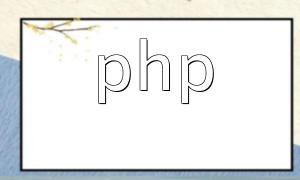When developing PHP applications, you often need to check whether a variable exists or is null — for example, when retrieving user input, reading configuration values, or handling database query results. Before PHP7, this was usually done with the isset() function or a ternary operator, resulting in verbose and less readable code. The null coalescing operator (??) introduced in PHP7 provides a cleaner and more efficient way to handle such cases.
$value = $variable ?? $default;This expression means that if $variable exists and is not null, then $value takes its value; otherwise, $value is assigned the value of $default. This concise syntax eliminates the need for repetitive null checks and makes the code easier to read.
When receiving form data, you often need to ensure a variable is defined before using it. The following example demonstrates how the null coalescing operator simplifies this process:
$username = $_POST['username'] ?? 'Anonymous';
echo "Welcome, " . $username;In this example, the program attempts to retrieve $_POST['username']. If the user hasn’t provided a username, the variable is null and the default value 'Anonymous' is used instead.
When fetching data from a database, a function might return null if no record is found. The null coalescing operator makes handling this scenario much cleaner:
$user = getUserFromDatabase($userId) ?? getDefaultUser();This statement first attempts to retrieve the user from the database; if the result is null, it automatically falls back to getDefaultUser().
The null coalescing operator is ideal for situations such as:
It helps make your code cleaner and reduces the need for repetitive if or isset() statements.
Keep in mind that the null coalescing operator only checks whether a variable is null or undefined. It does not treat empty strings, 0, or other falsy values as null. For more complex conditions, you may still need to use empty() or custom validation logic.
The null coalescing operator introduced in PHP7 offers developers a modern and elegant way to handle null checks. Whether you're processing user input or handling database results, it can greatly improve code readability and maintainability. By incorporating this operator into your workflow, you can write cleaner and more efficient PHP code.









